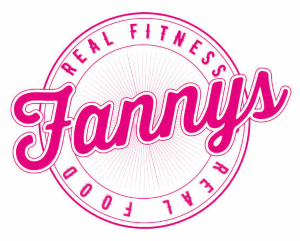I’ve no doubt that you’ve probably heard people say – you’ve possibly even said it yourself – that “portions are much bigger now than they used to be”.
Well it’s not their (or your) imagination, it’s true that portion sizes have steadily increased over the years and guess what? It’s no coincidence that so have our waistlines. Crisp packets, chocolate bars, bread slices, ready meals, fast food and restaurant portions, drinks bottles and cartons, desserts, sweet packets, wine glasses and of course, the size of the portions we are serving ourselves…
The problem with this is that our constant exposure to larger portions has altered our view of what is normal and appropriate. In the most part, weight management is about calorie control – taking the same amount of energy in than you are expending for maintenance (or more or less for weight increase or decrease). Even very small increments in daily calorie intake can lead to surprising weight gain over time. Take for example a swap of 2 thin slices of bread (approx 131kcals) for 2 thick slices (approx 294kcals) every day for a year and this can lead to a potential weight gain of 17lbs. Don’t forget, that extra portion doesn’t just bring extra calories, but also extra fats, saturates, sugars and salts – or whatever is in the food.
It’s not just HOW MUCH we’re eating, but also WHAT we’re eating that’s important. Not just for weight control, but also for normal (or even optimal) physiological functioning. If you’ve already tackled this and your weight – or even health – is still suffering, you may now need to pay attention to your portions.
That’s not to say that I’m an advocate of calorie counting, which I consider to be, at best, highly arbitrary and at worse obsessive, time wasting and possibly even detrimental to our mental wellness and our goals. Instead, we can simply tackle unwanted expanding waistlines by subtly bringing our portion sizes back into line. The great thing about this is that you can gradually get used to a reduction in calories without feeling like you’re massively restricting yourself.
So what is a normal portion? Well as always, there’s no ‘one size fits all’. Your energy intake requirements will depend upon many factors – your age, gender, height, health and importantly your activity levels. But don’t panic, working out your personal needs doesn’t have to be complicated.
First and foremost, the type of food you are eating can hugely affect the size of portion you are eating. Consider, for example, the calories in a large plate of salad, versus those in an ice cream milkshake. For the largest proportion of your food intake, you should aim for low calorie, high nutrient foods, such as vegetables, salads and fruits, lean meats and fish, pulses and whole grains.
However, don’t avoid high calorie foods altogether – just choose ones which also offer nutrient value. Think nuts, seeds, oils, avocados, cheese and butters. We still need these great fats in our diets, but just in smaller portions as fats contain roughly double the calories per gram than proteins and carbohydrates. Remember that processed foods often contain lots of fats AND sugars, which is an unnatural and detrimental, but unfortunately highly enjoyable combination for our bodies.
Eating in this way should lead you to a natural reduction in your calorie intake, since you will be more satiated post meals and less likely to search for more food as soon. Your tummies will literally be fuller for longer, your energy release will be more sustained and your blood sugar more stable.
After this, take on the following recommendations to reduce your portion size.
- Keep a food diary to keep track of what you’re actually consuming.
- Reduce your plate size.
- Weigh, measure or use cups or spoons to measure out until you become more familiar with what’s normal for you.
- Eat slowly, turn off distractions, look at your food and rest between mouthfuls.
- Stop eating before you are full – tune in and give your brain chance to receive the fullness signals before you have over-eaten.
- Learn to recognise appropriate hunger. Eat every 3-4 hours to avoid getting too hungry, but limit unnecessary snacking and extra calories from drinks (snacking is ok if you are going a long time between meals, but make sure you follow the same rules as above. Choose options which will nourish, satisfy and sustain you until your next meal and don’t overdo it).
- As a general guide (but remember that this may need adjusting based on personal energy requirements), each meal should contain:
- A fist sized portion of vegetables (2 for men)
- A palm sized portion of lean protein (2 for men)
- A thumb sized portion of healthy fats (2 for men)
- If eating packaged foods ALWAYS read the ingredients AND the nutritional information.
- Each week aim to reduce your meal sizes and/or snacks by a little until you reach your desired effect.





